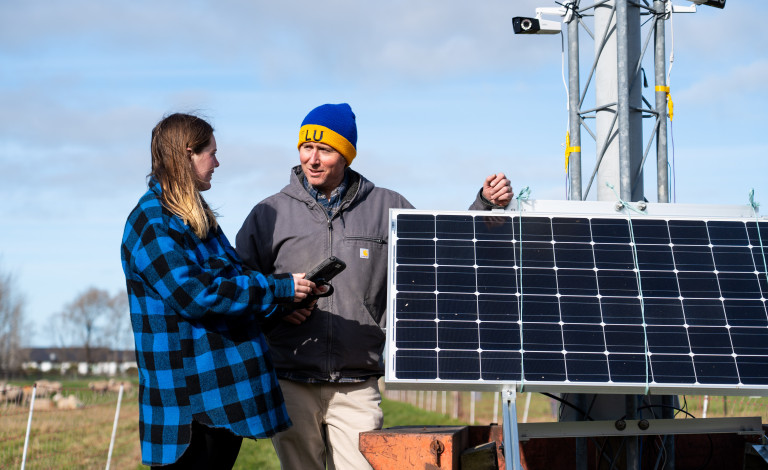A natural defence for a vineyard pest
17 July 2025 | News
Scientists at Plant & Food Research, in collaboration with Lincoln University, are exploring whether some grapevines are better at naturally defending themselves from the disease-spreading pest, mealybug.
Grapevine leafroll-associated virus 3 (GLRaV-3), transmitted by mealybugs, poses a significant problem for the wine industry worldwide and is estimated to cost tens of millions of dollars in lost productivity in New Zealand alone. The disease is particularly severe for red varieties, not only reducing yield, but also delaying ripening. Mealybug infection can also lead to the development of black sooty mould, affecting grape and, ultimately, wine quality.
The smart, adaptive grapevine rootstocks for a changing world programme, which is funded by the Ministry for Business Innovation and Employment’s Endeavour fund, aims to find out if some grapevine varieties naturally produce higher levels of defence compounds, which deter mealybugs from feeding.
The research team includes experts in viticulture, plant chemistry, insect behaviour, quantitative genetics and molecular genetics. As well as establishing how mealybugs respond to different levels of these compounds, the team wants to understand how these traits can be introduced to grafted plants, the process of bringing the tissue of two plants (known as a rootstock and a scion) together. This process is the industry standard for grapevine propagation.
“If we can identify the compounds that make mealybugs less interested in the plant, and determine if the whole plant is protected by these compounds, grape breeders could grow plants that resist the bug and therefore the virus,” says Lincoln University PhD student Michelle Thompson, who is running trials at Plant & Food Research’s Lincoln research centre to quantify mealybug behaviour as part of the programme.
Michelle is using a technique called electropenetrography, or EPG, for the trials. This involves mealybugs being gently attached to a very thin gold wire, while the grapevine is connected to a low-voltage circuit. When the bug inserts its mouthparts into the plant’s leaves to drink sap, tiny changes in electrical signals are recorded.
Read more from Michelle in Plant and Food's article here >>
Image sourced from Plant & Food Research

